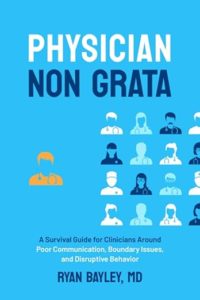Job Crafting – The Art of Thriving at Work (Part Two)

Closing The Gap Blog – July 2019
Welcome to Part Two of our three part series on job crafting for physicians. In case you missed the first part of our article, job crafting refers to an evidence-based process for taking proactive steps and to redesign what we do at work – essentially changing tasks, relationships, and perceptions of our work to improve our experience. In Part One, we looked at task crafting and how we can alter the individual components of what we do.

In this article we will look at the second component of job crafting – relationship crafting. In relationship crafting we focus on how we can re-shape the type and nature of interactions we have with others. As physicians, large parts of our day involve interacting with others. Patients, colleagues, ancillary staff all demand our time and attention. It not an exaggeration to say that our work is first and foremost a social endeavor.
Thus it is not surprising that our interactions can make or break the quality of our days. Multiple studies have shown, for example, that despite all of the talk of how our healthcare system drives burnout, it is ultimately the sense of connectedness, or lack thereof, with our practice partners that is the number one predictor of whether or not we leave. Thus, by focusing on the quality of our relationships we can improve the quality of our work experience.
When we work with physicians on relationship crafting, we have found it is useful to start by exploring the good and bad relationships that already exist. You can do this by taking a moment to imagine a particularly good relationship at work. This is the type of person you are often happy to see, or reassured when they are involved in your case. These are the type of relationships that generally are repleting, or at least buffering against the countless other stressors. What is it that actually accounts for that? Is it clarity on shared purpose, or how you speak to each other, or predictability? What are the essential components of that interaction?
Now do the same thought exercise for a particularly poor relationship. Once you have done this, you now have specifics that can inform why your overall experience is what it is. Building upon that, ask yourself:
- How healthy are your current workplace relationships?
- Do the patterns you noticed in the good relationship/bad relationship exercise manifest in other people or groups in your work?
- What would enhance your connections with patients? With colleagues?
- Are there interpersonal issues or challenges that need to be addressed with particular individuals?
- What can you bring to the table to improve communication, trust, and respect? What skills might you need to work on (ie formally cultivating conflict resolution skills, or better managerial skills)
- Are there people who you can interact with more, or less?
- What professionals or colleagues could you start interacting with (such as through new initiatives) that you do not now?
Unfortunately, much of medicine is plagued by low emotional intelligence and toxic behaviors that have been tolerated for far too long. Sometimes, a work environment is simply too malignant, and the only recourse to relationship craft is to change employers. More often, however, our work relationships are just imperfect, a product of being under considerable strain given the current healthcare environment. While less than ideal, these relationships are often workable, and even small improvements can make a big difference in how our days feel.
They key is to start small and focused. Pick one area, such as patients, and aim for a 5% improvement. What changes can you make for just a 5% improvement in your relationships with your patients? In some practice settings it is possible to alter the types of patients you interact with. Or perhaps it is a matter of re-establishing that sense of connection with the patients you do have. In that instance, 5% might look like taking a few moments to change how you interact with just one of the 20 patients you see in a busy a clinic day.
Five percent may not sound like much, but the physicians we work with are often surprised at how much of an impact one or two very small, focused changes can make.
Combined with task crafting as discussed in Part One, these two tools can significantly change how you work and how you experience your work. Join us next month for Part Three: Cognitive Crafting. Also, if you want to further explore how these concepts can work for you, as well as other changes you can make to experience more vitality and fulfillment both at work and at home, we offer introductory consultation coaching sessions to begin the work of creating your best work.
 One instance of being labeled a poor communicator, uncivil, or disruptive can wreak havoc on your career.
One instance of being labeled a poor communicator, uncivil, or disruptive can wreak havoc on your career.